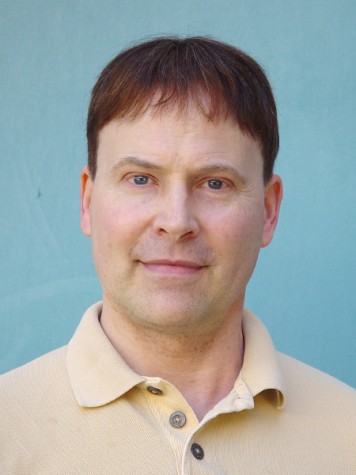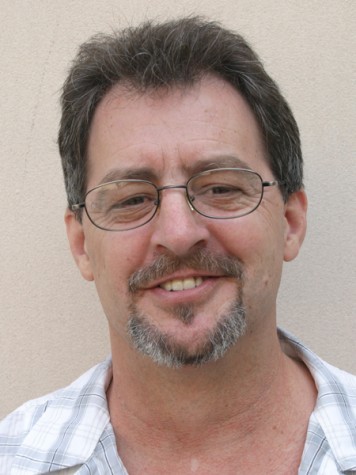Award-winning author-editor Denise Hamilton articulated how she compiled her collection of 17 noir fiction short stories, “Los Angeles Noir,” to a receptive auditorium on Oct. 27.
In this One Book/One Glendale series lecture, Hamilton, a former Los Angeles Times journalist who authored six noir novels, won the Edgar Allen Poe award for best first novel “The Jasmine Trade” (2001), and was a finalist for the WILLA (Willa Cather) Award in contemporary fiction.
A Fulbright Scholar, she has also received the Macavity Award and the Anthony Award.
“Los Angeles is indeed a city of angels and demons,” said Hamilton. Journalism gave her a reason to survey the inner workings of the city, go behind the scenes of the crimes, and interview everyone who wanted to talk and anyone who didn’t.
As a child, Hamilton was a voracious reader and fond of writing. She wrote about her dog, finding Atlantis, and traveling to Mars. After receiving a bachelor’s degree in economics from Loyola Marymount, she knew what she wanted: a master’s degree in journalism, which she earned at Cal State Northridge.
As an L.A. Times intern, Hamilton was young, polite and she submitted a story a day. She said the editors liked her because unlike the veteran writers who complained, she did not argue about how the editors rewrote her words.
“I would have probably done it for free,” said Hamilton. But within one year she was hired on as a reporter and for the next 10 years, interviewed “thousands of people; wrote thousands of stories; and interviewed millionaires, mayors, and people living in tents along the L.A. River.” She had found a profession where she could “get paid to be nosy, ask questions and then write stories.”
“All you have to do is go out and talk to people and you will find the most surreal, bizarre, tragic, funny, wacky human stories,” said Hamilton.
Then Hamilton got the itch to write in a way that journalism did not allow. She said one good thing about writing fiction is “you can show official corruption without the proof.”
The voices of those she had met kept right on talking in her head about their murder cases, police corruption and incredible stories. For example, Hamilton told the story of how the town of San Marino was full of Asian kids living alone in huge mansions with only their mom and a housekeeper while their fathers worked overseas.
“Reporters are kind of like gumshoe private eyes,” said Hamilton. “Somebody gives [us] information and then we go talk to someone else.” Like private investigators, reporters find witnesses that the police fail to interview, and sometimes there are people who have witnessed the crimes but are criminals themselves and don’t want to go talk to the police.
These experiences were fodder for Hamilton’s six crime novels. Five of them feature a young woman reporter who solves crimes in the San Gabriel Valley, Pasadena, Glendale and the Silverlake area, “not the rich, white Westside.” She prefers to write about the ethnic diversity of Los Angeles.
Growing up on the Eastside and reading mysteries, biographies and history helped Hamilton imagine “tales of heartbreak and triumph, survival – despite incredible odds – and tragedy as horrifying as any from ancient Greece.”
“It’s nice to give a voice to people who are on the wrong side of the law,” said GCC Librarian Nancy Getty. “They’re human, too. Some of them have good qualities as well as bad.”
Getty, a self-professed noir fan, said Hamilton was accurate, knowledgeable and “just great. Noir is where you see the humanity of bad guys acknowledged.”
When a new publisher, Akashik Books, asked Hamilton to put together and edit a short story anthology of 21st century works, how could she say no? It was to be the next in the series of over 20 titles including: “New Orleans Noir,” “Baltimore Noir,” “Las Vegas Noir,” “Manhattan Noir,” and “Trinidad Noir.” She set out to find 10 well-known local noir writers and ten L.A. writers who were new to the medium of noir. They would all have to be intimately connected to the city and capable writers in their own right.
Hamilton has been meeting up with a group of nine women writers for 15 years, who read and critique each other’s work. Fortunately the literary community in L.A. is rather tight. The writers meet up at literary conventions, cafés and bars.
Hamilton wanted writers who could really show the skill and diversity of Los Angeles such as Janet Fitch, author of “White Oleander” (1999) and Héctor Tobar, columnist for the L.A. Times. They said, “You mean I have to kill someone?”
Hamilton said, “Yes, if you can do it in 15 pages or less; and please pick a neighborhood that hasn’t been used before; and don’t use a detective in a trench coat.”
“What is noir?” Hamilton had to explain. Noir means black in French, so L.A. noir means “dark tales from Los Angeles.” Some of her influences were Raymond Chandler, Susan Straight and Albert Camus.
“Bad people do bad things,” said Hamilton remarking that Mulholland drive, the L.A. River, and Commerce are great places to dump a body. She also suggested watching all the traditional noir movies such as “The Maltese Falcon” (1941), “Double Indemnity” (1944), and “Sunset Boulevard” (1950).
Los Angeles was the birthplace of noir in the late 1920s thanks to the prohibition of alcohol. “Crooked cops were on the take from speak-easies and night-clubs. You had gangsters, femme fatales, flappers, the jazz age,” she said.
“Black Mask Magazine” was the first publication for short stories of noir crime fiction. James M. Cain was probably the first one to write noir fiction in Los Angeles. Raymond Chandler was also published in Black Mask. Characters who swore in Compton slang were a shock to the establishment. But the writers would not allow the editors to pretty up the language.
“Why would we want to read about the ugly parts of society?” asked Hamilton. “For the same reason that we slow down to see the car-crash on the freeway: we can’t not look.”
Humphrey Bogart in a trench coat played the original detective, and many of film noir’s architects were refugees from Hitler’s Europe, “steeped in expressionism and existential despair, and they brought that sensibility to the shadows, silhouettes, urban labyrinths and hard-boiled plots of their movies,” she said.
The beauty of the landscape had the white sandy beaches, green orange groves, and white mountain peaks. Many beauty queens and cowboys had come to make it big in modeling, music or show business.
“Hollywood dreams and scandals filled the headlines, and everybody was pretending to be somebody they were not,” said Hamilton.
Hamilton said noir can be about “good people who take one step down the wrong path and say, ‘I’m just going to take this bag of money that’s not mine,’ or ‘I’ll just sleep with this one woman who is not my wife,’ or ‘I’ll just kill this one person.’ Then they rationalize doing it and plan how they are going to get away with it. They take one step, and then they have to take another step onto a downward spiral. ‘I just have to kill these three last people who saw what happened.'”
Almost a century later, Hollywood continues to “cast a giant shadow.the seductive blur of artifice and reality,” said Hamilton. But, noir does not have to be a crime story. The short story “Fish,” for example, is “haunting in the way of Christopher Isherwood as is Susan Straight’s ‘The Golden Gopher,’ whose female narrator returns to L.A. to tell one childhood friend about the death of another.”
Like Hamilton, Straight is a Southern California native. She writes with “penetrating insight, spinning worlds and characters into a vista of enormous sadness where past meets present,” said Hamilton.
“L.A. is now more noir than ever,” said Hamilton in concluding. When Chandler was writing in the 1940s, L.A. was mostly orange groves and bean fields. “L.A. is an inspiration: devilish, puzzling, entrancing. L.A. is like a bad boyfriend: I know he’s no good for me and I’ve been trying to leave him for years; and just when I’m ready to move on, he woos me back.”
Also in attendance were anthropology professor Victoria Buresch and English instructor Sarah McLemore. McLemore said she thought it was interesting how Hamilton coaxed writers who were new to the genre to contribute noir fiction stories. Buresch, who loves old noir movies like “Double Indemnity” and “They Shoot Horses, Don’t They?” (1969) said, “The talk was fantastic; [Hamilton] sure used a lot of colorful words to describe what noir is all about.”
History instructor Kristin Leaf, who also thought the talk was impressive, summed up the noir concept nicely: “Film noir and noir fiction has been conceptualized and sold to the rest of the world as glamorous, romantic utopia and cruel, menacing dystopia.” What would entertainment be without it?
All in all, the audience members were very attentive, often nodding their heads in agreement and eager to have their books signed afterward. Many were students assigned to read Hamilton’s selection of short stories for homework. Others were just there for the love of noir.
Hamilton’s other books are “Sugar Skull” (2003), “The Last Lullaby” (2004), “Savage Garden” (2005), “Prisoner of Memory” (2006), “The Last Embrace” (2008), “L.A. Noir 2” (2010) and, due out Sept. 2011, “Damage Control.”


